As regards invoice data listings and quarterly VAT settlement reports – the new fulfilments taking place in Italy as from this year – some news has been recently provided by Parliament and by …
New Italian reports
As regards invoice data listings and quarterly VAT settlement reports – the new fulfilments taking place in Italy as from this year – some news has been recently provided by Parliament and by Agenzia delle Entrate. First issue – fixed by Law 19/17 – relates to the submission timing: while quarterly deadlines fixed by decree 193/16 (meaning: May 31st as to the first quarter; September 16th as to the second quarter; November 30th as to the third quarter; February 28th of the following year as to the fourth quarter) have been confirmed for VAT settlement reports, for the year 2017 only invoice data listings will have to be submitted just twice: by September 16th as to the first quarter and by February 28th, 2018 as to the second quarter. As from 2018 the same timing as VAT settlement reports will be adopted.
With regard to the invoices data listing contents, Agenzia delle Entrate memo 1/17 points out that data requested are essentially those (already) posted in VAT-ledgers. In any event further information – usually not included in VAT-ledgers – will have to be mentioned, such as: i) sales invoices (issued but) not posted in VAT-ledgers yet; ii) new codes needed in order to properly identify the kind of transaction (taxable or VAT exempt transactions, margin scheme, distance sales, telecom services and so on); iii) the F.R. data (if reported on the invoices).
As regards invoice data listings, Agenzia delle Entrate further highlights that only invoices (and respective data) have to be taken into account. Hence, distance sellers not issuing any invoices are not requested to communicate anything.
The legislation as currently drafted, gives rise to some strange consequences.
For the time being; invoice data listing represents a VAT fulfilment provided for by two different Law regulations: Decree 193/16 considers it as mandatory, while Decree 127/15 considers it as optional
That is why, in order to promote such an option, decree 127/15 grants priority VAT refunds, provided that data related to sales not supported by invoices (being simply posted on so called corrispettivi ledger) are submitted at the same time.
Thus, with regard to VAT-payers not using corrispettivi ledger; the option provided for by decree 127/15 seems quite favorable: same fulfilments as those laid down in decree 193/16 but faster VAT refunds. As a consequence, it is likely that many businesses will chose the option provided for by decree 127/15.
It is also likely, however, that Agenzia delle Entrate will not be in the position to handle such a large increase in priority refunds, which will be then end up with the lengthy delays that currently exist. Deadline to take up the option is March 31st 2017.
VAT exempt sales of goods to vessels
In accordance with C.J. guidelines, two recent Agenzia delle Entrate memos provided some instructions about vessels bunkering VAT regime and about the notion of “vessels used for navigation on the high seas”.
As to the first issue, Agenzia delle Entrate resolution 1/17, retracing Court of Justice opinion in case C-526/13 Fast Bunkering, states that VAT exemption is granted to fuel supplies to intermediaries acting in their own name, if the transfer to those intermediaries of the ownership of the fuel took place at the earliest at the same time when the operators of vessels used for navigation on the high seas were actually entitled to dispose of those goods as if they were the owners. For the exemption it is therefore necessary that the intermediary never took physical delivery of any fuel, so that it is only once when the fuel is loaded into the fuel tanks of the vessel that the supplier can determine the actual amount transferred and thus draw up the corresponding invoice.
As to the second issue, resolution 2/17 points out that a vessel is used for navigation on the high seas when it navigates 70% (or more) of the distance travelled beyond the 12 nautical miles limit from the coast. For ships under construction a declaration about the future use of the vessel for navigation on the high seas is needed; the respect of the 70% percentage will have to be verified by the following year the ship’s launch into the sea. The Agency claims that such percentage must be verified on the basis of the “official documentation”. Bearing in mind that any further clarifications have been provided by Agenzia delle entrate, such official documentation could be represented by the vessel log book. If so, however, the VAT exemption regime on supplies of goods to the vessel could be granted (only) in case the supplier was in the position to calculate by himself relevant percentage, on the grounds of for example the log book copies received from the vessel owner. It is not sure, at the moment, whether a self-statement from the owner himself would suffice to get VAT exempt supplies.
Alessandro Garzon

